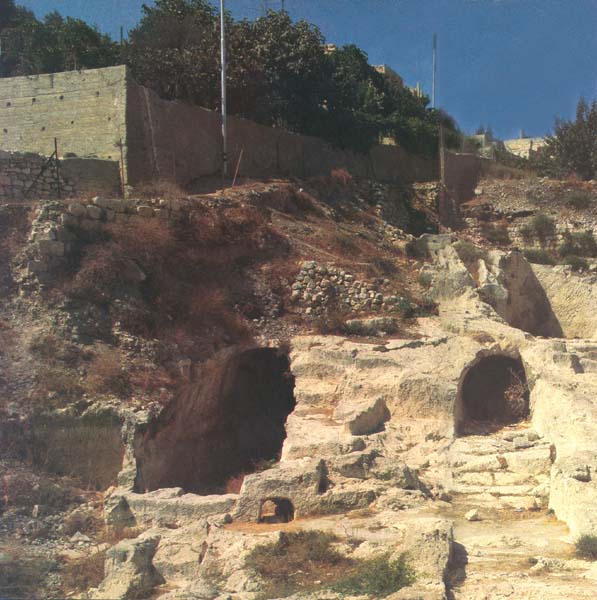Image Details

Werner Braun
Royal tomb, wine cellar and water cistern are some of the functions archaeologists have proposed for the deepest opening, at left, cut into this rocky slope in Jerusalem’s City of David. Its original use has been disputed since Raymond Weill excavated here early in this century and discovered what he believed to be nine tombs (designated T1 through T9), which he identified as the tombs of the kings of Judah. The largest and most elaborate, T1, appears at left, with T3 to the right.
If tombs, the City of David cemetery provides evidence of a rare ancient practice: burial within a city. The Mishnah, the compilation of Jewish oral law dating to about 200 C.E., forbids interments inside a walled city, but the Bible describes an exception—royal entombments: “David slept with his fathers, and he was buried in the City of David” (1 Kings 1:51). So were the later kings of Judah, up to King Ahaz. Weill’s tombs were found precisely where the Bible says the kings of Judah were buried.
Could T1, the most imposing, have belonged to King David?
